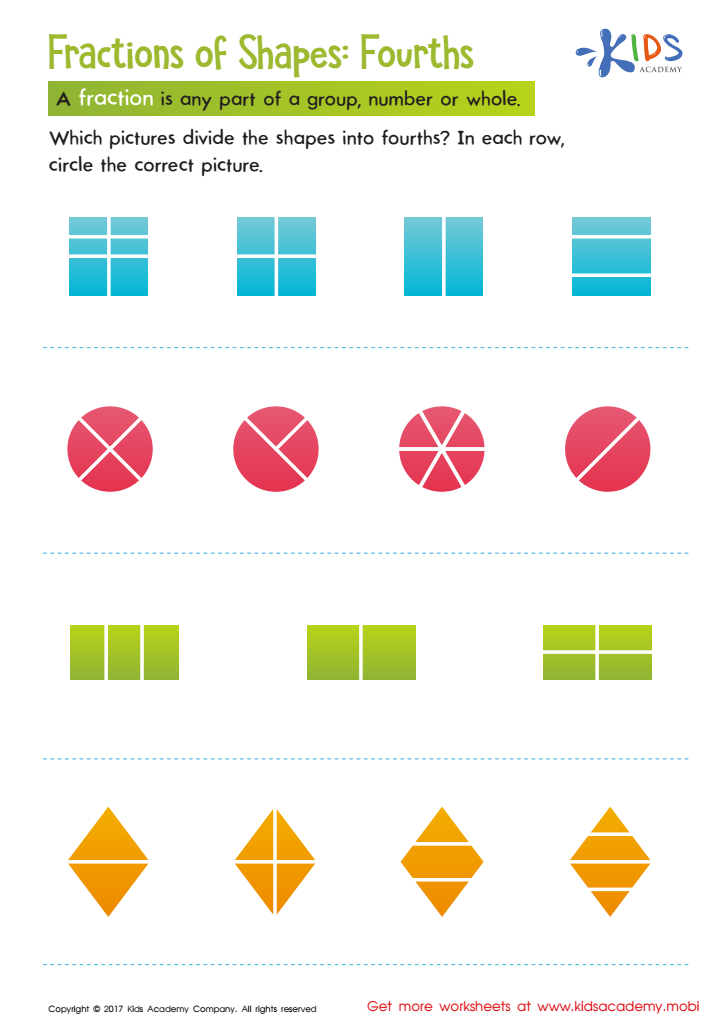Recognizing shapes Geometry Worksheets for Ages 6-7
3 filtered results
-
From - To
Explore our engaging "Recognizing Shapes Geometry Worksheets" designed specifically for children ages 6-7. These interactive resources help young learners identify and differentiate various shapes in a fun and educational way. Through colorful visuals and varied activities, children will develop their spatial awareness and critical thinking skills while becoming familiar with basic geometric concepts. Each worksheet is aimed at enhancing math proficiency in alignment with grade-level standards. Perfect for use at home or in the classroom, our printable worksheets encourage independent learning and reinforce classroom lessons. Get started today and watch their understanding of geometry flourish!


Congruent Shapes Worksheet


Lines of Symmetry Printable


Fractions of Shapes Worksheet
Recognizing shapes is a fundamental skill in early education, particularly for children aged 6-7, and both parents and teachers should prioritize this learning. Understanding shapes plays a crucial role in developing critical thinking and problem-solving skills. It enhances cognitive abilities as children begin to categorize, compare, and manipulate various geometric forms, fostering a foundation for more advanced math concepts in later grades.
Moreover, shape recognition is vital for spatial awareness, which aids in the child’s ability to navigate their environment, understand maps, and visualize patterns. This skill extends beyond math; it is essential for skills in art, architecture, and design, promoting creativity.
Socially and emotionally, discussing shapes can nurture collaborative learning experiences when children work in groups, enhancing communication skills. Recognizing shapes also integrates with everyday life, as children learn to identify shapes in their surroundings, cultivating observation skills and curiosity.
Finally, acknowledging the importance of shapes encourages parental involvement with hands-on activities at home, supporting a balanced education. Embracing shape recognition allows teachers and parents to instill critical foundations that will aid in the child's overall intellectual growth and prepare them for future success in various disciplines.
 Assign to My Students
Assign to My Students






























